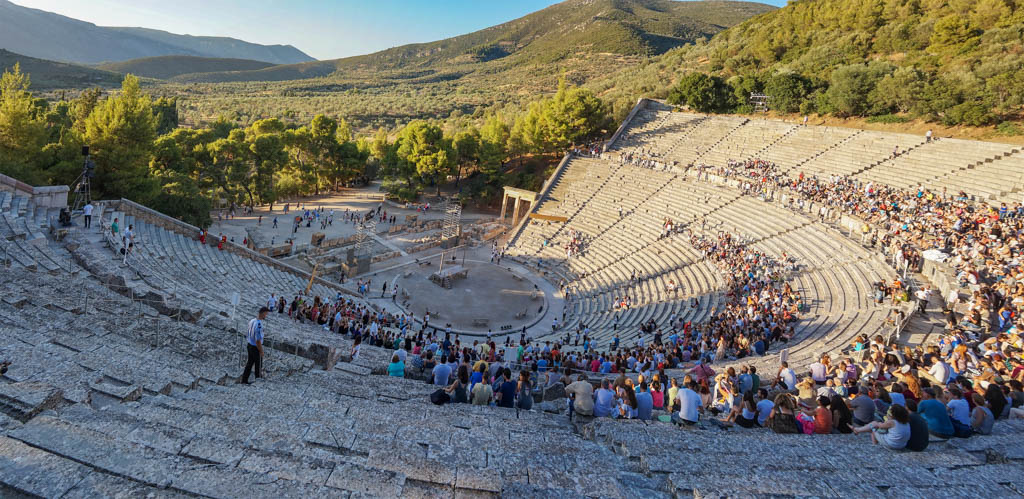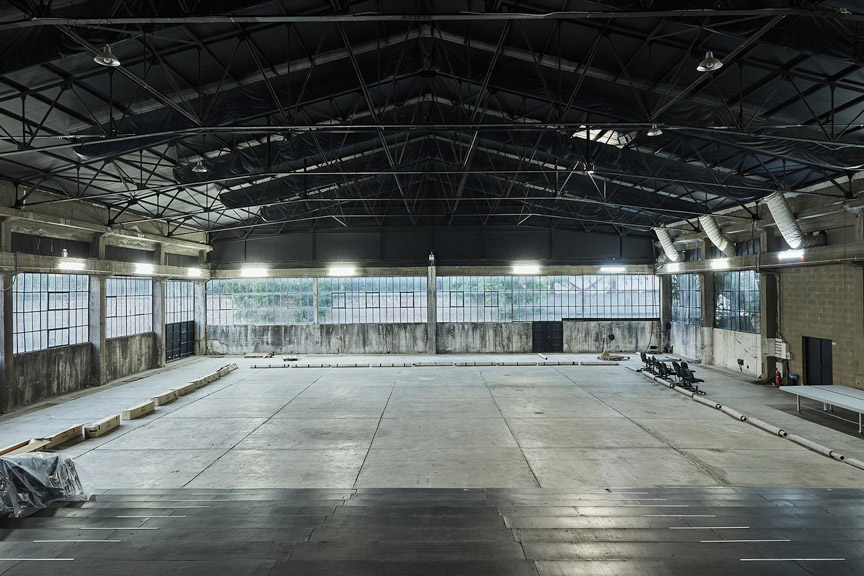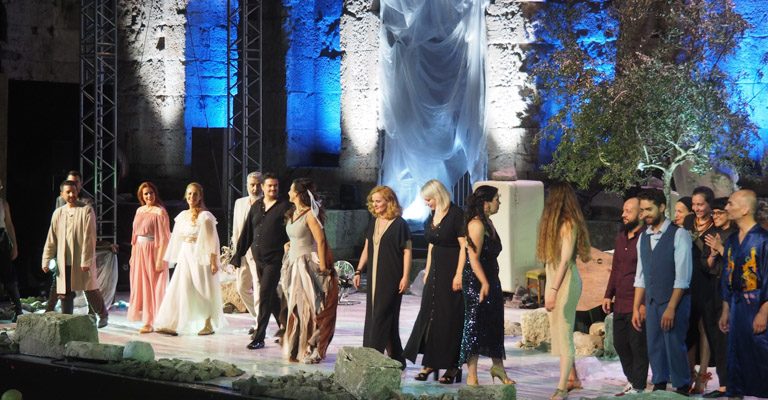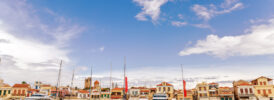The summer months in Athens are alive with culture as performances from the classical to the avant-garde are held at historic venues. The Athens Epidaurus Festival is a huge highlight for visitors interested in culture. Let’s have a look!
Where it Happens- the Athens Epidaurus Festival Venues
Four stages host this famous festival, three of them under the starry skies. The most famous and ancient of these is the Theater of Epidaurus which is part of the sacred Sanctuary of Asclepius, the healing demi-god of ancient Greece. The Ancient Greeks were indeed very wise, understanding the significance of spiritual well-being and its role in healing. Therefore, drama and athletics were integral to the site. Epidaurus is on the northeast coast of the Peloponnese, about two hours from Athens.

The 4th-century BC theater is an absolute marvel of acoustics, praised for its symmetry and beauty. It’s also enormous, historically hosting over 13,000 spectators.
The primary Athens venue is known to all – the Odeon of Herodes Atticus, at the base of the southwest slope of the Acropolis (very close to the Acropolis Museum). This was built in 161 AD by the Roman Senator Herodes Atticus. Its original three-story wall is now one of the most famous and beautiful backdrops in the world. The theater was restored, using Pentellic marble, in the 1950s. Locals call it “The Herodian.” The theater is smaller than that of Epidaurus – it holds 5,000 spectators. The views of the Parthenon and Temple of Athena Nike from below are dreamy.
 Another venue of the festival is the Little Theater of Epidaurus, near the post of Ancient Epidaurus. This smaller historic venue is also an outdoor amphitheater, built in the 4th century BC. It holds 200 spectators and is ideal for more intimate performances.
Another venue of the festival is the Little Theater of Epidaurus, near the post of Ancient Epidaurus. This smaller historic venue is also an outdoor amphitheater, built in the 4th century BC. It holds 200 spectators and is ideal for more intimate performances.
Lastly, the only indoor venue of the festival is Piraeus 260, a large warehouse-like space ideal for more avant-garde performances.
The Athens Epidaurus Festival – a Rich History
Now a famous event on the global cultural calendar, the Athens Epidaurus Festival is just about to close its seventh decade. Originally, the festival was two: the “Epidauria” – performances of Ancient Greek Drama at the Theatre of Epidaurus at the Sanctuary of Asclepius, and the Athens Festival. They soon merged, making for an impressive program.

From the very start, the festival has been defined by performances and artists of the highest caliber. Both internationally known Greek artists and artists of world-wide fame have been drawn to some of the world’s most illustrious and historic stages, to perform under the night skies. As the years have progressed, the program has expanded from Ancient Greek theater and opera to include dance and modern theatrical performances and contemporary music.
The Athens Festival’s inaugural year of 1955 featured one of Greece’s most famous directors, Alexis Minotis, directing Hecuba. (Minotis was also an actor, and performed in the film Boy on a Dolphin with Sophia Loren). Another notable event of the same year brought together two significant Greek names- the conductor and composer Dimitris Mitropolis (and director of the New York Philharmonic), conducting the NY Philharmonic in a program of “36 Greek Dances” by the Greek composer Nicholas Skalkottas.
Other great highlights throughout the festival’s history include Maria Callas’ 1961 performance of Norma at the Ancient Theater of Epidaurus- the first time the historic theater held an opera. Rudolph Nureyev and Margot Fonteyn performed at the Herodes Atticus, also in 1961. Modern Dance performances of note include the Alvin Ailey American Dance Theater company in 1979, and the Martha Graham Dance Company in 1983.
In 1991, Luciano Pavarotti gave a performance at the Herodes Atticus. More splendid opera performers followed, with Montserrat Caballé in 1992, and José Carreras in 1993.
Highlights of the 2024 Athens Epidaurus Festival
At the Ancient Theater of Epidaurus, there will be a staging of Iphigenia in Aulis, directed by Timofey Kulyabin on July 5 and 6. The National Theater of Greece will stage the Oresteia, under the direction of Theodoros Terzopoulos, on July 12 and 13. Fans of modern theater may enjoy Parallax, a Hungarian production staged by Kornél Mundruczó, at the Piraeus 260 on July 14 and 15. An interesting play marks the 50th anniversary of the Polytechnic uprising: 50 Years, One Night, directed by Manos Karagiannis, looks at this defining moment through a contemporary lens.
 Opera fans will enjoy the Greek National Opera’s production of La Traviata, under the direction of Pier Giorgio Morandi and Konstantinos Rigos, from July 27 – 31, at the Herodes Atticus. Meanwhile, at Piraeus 260 there is a very full program of contemporary dance performances, beginning with the Dresden Frankfurt Dance Company À la carte, choreographed by Ioannis Mandafounis, on June 5 and 6. C la vie, choreographed by Serge Aimé Coulibaly and performed by the Faso Danse Théâtre of Burkina Faso and Belgium takes place on June 12 and 13. Based on the choreography of Pina Bausch and under the direction of Roger Bernat, the Rite of Spring will be performed on June 28-30.
Opera fans will enjoy the Greek National Opera’s production of La Traviata, under the direction of Pier Giorgio Morandi and Konstantinos Rigos, from July 27 – 31, at the Herodes Atticus. Meanwhile, at Piraeus 260 there is a very full program of contemporary dance performances, beginning with the Dresden Frankfurt Dance Company À la carte, choreographed by Ioannis Mandafounis, on June 5 and 6. C la vie, choreographed by Serge Aimé Coulibaly and performed by the Faso Danse Théâtre of Burkina Faso and Belgium takes place on June 12 and 13. Based on the choreography of Pina Bausch and under the direction of Roger Bernat, the Rite of Spring will be performed on June 28-30.
The complete program of this year’s festival can be found here.
A Cultural Holiday
Have you ever attended any of the performances of the Athens Epidaurus Festival? It can be a wonderful way to experience Greece.





